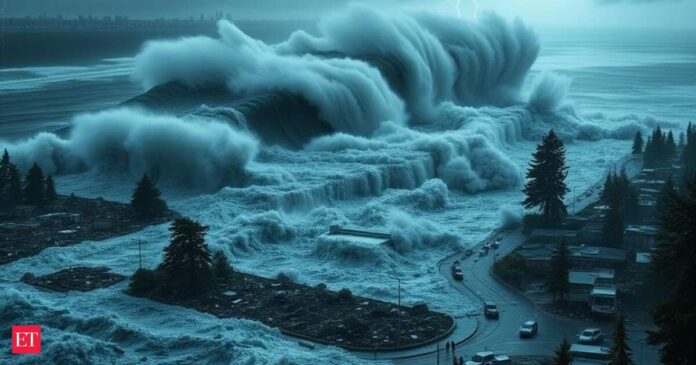If an earthquake strikes the Cascadia subduction zone, a fault stretching from Northern Vancouver Island to Cape Mendocino, California, it can put Alaska, Hawaii, and parts of the mainland America’s West Coast at risk.
The findings of the study suggested that the quake would potentially wipe out cities like Seattle and Portland, Oregon. It could also sink coastal land by as much as 6.5 feet. If that turns out to be true, the mega-tsunami’s waves could reach up to 1,000 feet, putting millions of Americans at new risk.
Virginia Tech study ran thousands of models
According to media reports, the Virginia Tech study ran tens of thousands of models, revealing that thousands more people, buildings, and miles of roads would face flooding than what current hazard maps show.
“The expansion of the coastal floodplain following a Cascadia subduction zone earthquake has not been previously quantified, and the impacts to land use could significantly increase the timeline to recovery,” said Tina Dura, lead author of the study and assistant professor in Virginia Tech’s Department of Geosciences.
Parts of Washington, Alaska, and California can see severe effects, says study
According to the new research, the most severe effects would be in southern Washington, northern Oregon, and northern California. Alaska and Hawaii, which are far from the fault line, are vulnerable due to their seismic and volcanic profiles. There also has not been a quake of large seismic magnitude along the Cascadia subduction zone since 1700.The scientists warned that there is a difference between an ordinary tsunami and a mega-tsunami. On one hand, an ordinary tsunami generates waves standing a few feet tall; on the other hand, a mega-tsunami is defined by extreme height, with waves often stretching hundreds of feet into the air. Unlike gradual climate-driven events, this potential earthquake would “happen within minutes, leaving no time for adaptation or mitigation,” the scientists said, according to the Independent.

